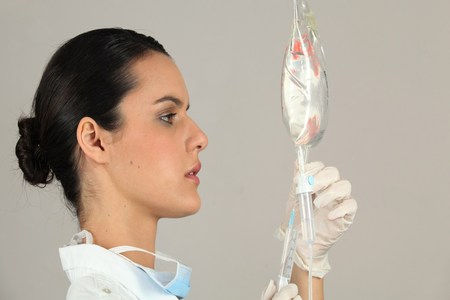 Auremar/PhotoSpin
Auremar/PhotoSpin
Toxic shock syndrome (TSS) can be the result of using a tampon but many don’t realize it can be also the result of recent surgery, skin infections, or burns. TSS can be deadly in more than 50 percent of cases, stated the National Institutes of Health.
If you are suffering from of the following symptoms, visit the emergency room immediately and contact your health care provider. Quick action is crucial if you have TSS.
Symptoms of TSS include:
• Dizziness
• Fainting
• Confusion
• Sudden high fever (over 102 degrees)
• Low blood pressure
• Headache
• Bloodshot eyes
• Sunburn-like rash
• Vomiting
• Muscle aches
• Diarrhea
• Sore throat
According to the National Institutes of Health, TSS "is caused by a toxin produced by certain types of Staphylococcus bacteria. A similar syndrome, called toxic shock-like syndrome (TSLS), can be caused by Streptococcal bacteria. Not all staph or strep infections cause toxic shock syndrome."
The Nemours Foundation states, "TSS is a systemic illness, which means that it affects the whole body. It can be caused by one of two different types of bacteria, Staphylococcus aureus and Streptococcus pyogenes — although toxic shock that is caused by the Streptococcus bacteria is rarer. These bacteria can produce toxins. In some people whose bodies can't fight these toxins, the immune system reacts. This reaction causes the symptoms associated with TSS.”
TSS can affect men and women. Children and postmenopausal women can also be afflicted with TSS.
TSS in tampon users can be prevented. The Food and Drug Administration recommends avoiding any issues with tampon use. The following tips are further recommendations by the FDA:
• Change your tampon at least every 4-8 hours
• Consider switching between pads and tampons
• Select the lowest absorbency for your flow
• Don't use tampons between periods
• Follow package directions for insertion
• Know the warning signs of TSS
Watch for additional risk factors for TSS. These factors may include:
• Wound infection after surgery
• Foreign bodies or packings (such as those used to stop nosebleeds)
• Recently having a baby
• Surgery
• Staphylococcus aureus (S. aureus) infection, commonly called a Staph infection
Treatment for TSS includes the following:
• Removal of any foreign materials, such as tampons, vaginal sponges, or nasal packing
• Drainage of sites infection (such as a surgical wound)
• Antibiotics for any infection (may be given through an IV)
• Medicines to control blood pressure
• Fluids through a vein (IV)
• Intravenous gamma globulin in severe cases
• Staying in the hospital intensive care unit (ICU) for monitoring
• Dialysis (if severe kidney problems are present)
Sources:
"TeensHealth." Toxic Shock Syndrome. Web. 30 June 2013.
http://kidshealth.org/teen/sexual_health/girls/tss.html?tracking=T_RelatedArticle
"Menstruation and the Menstrual Cycle Fact Sheet." Womenshealth.gov. Web. 30 June 2013.
http://womenshealth.gov/publications/our-publications/fact-sheet/menstruation.cfm
"Toxic Shock Syndrome: MedlinePlus Medical Encyclopedia." U.S National Library of Medicine. U.S. National Library of Medicine. Web. 30 June 2013.
http://www.nlm.nih.gov/medlineplus/ency/article/000653.htm
Reviewed July 1, 2013
by Michele Blacksberg RN
Edited by Jody Smith


Add a Comment1 Comments
TSS is always a risk with tampon use - tampon-related TSS can be prevented by using safer options like menstrual cups or softcups, which have never been associated with TSS or other health risks.
Tampons should be changed every 4-6 hours - bacteria multiply exponentially and tampons encourage bacterial growth while preventing vaginal cleaning, 8 hours is too long to leave a tampon and if you can go that long without leaking you're using too high an absorbency.
Additional prevention while using tampons;
• Avoid rayon tampons e.g. Tampax, Playtex, Kotex, instead opt for cotton tampons such as Cottons, Natracare or Maxim which pose far lower risk of TSS, infections, and don't contain toxins such as dioxin.
• Alternate with pads, ideally for 8 hours, to allow the vagina to clean, re-adjust pH and heal after tampon use. Pads should always be used overnight, and with very light flow, also if you have an infection.
• Wash hands before use, and be sure to check the tampon for signs of mould or dirt - store tampons in clean dry place, remember than tampons are sanitary but not sterile so can harbour bacteria prior to use.
TSS can occur at any time - it is a myth that it only occurs from improper tampon use or leaving tampons too long - although rare it is more common than many people believe, many women have had a milder form of TSS without knowing it or been misdiagnosed.
July 1, 2013 - 4:47pmThis Comment